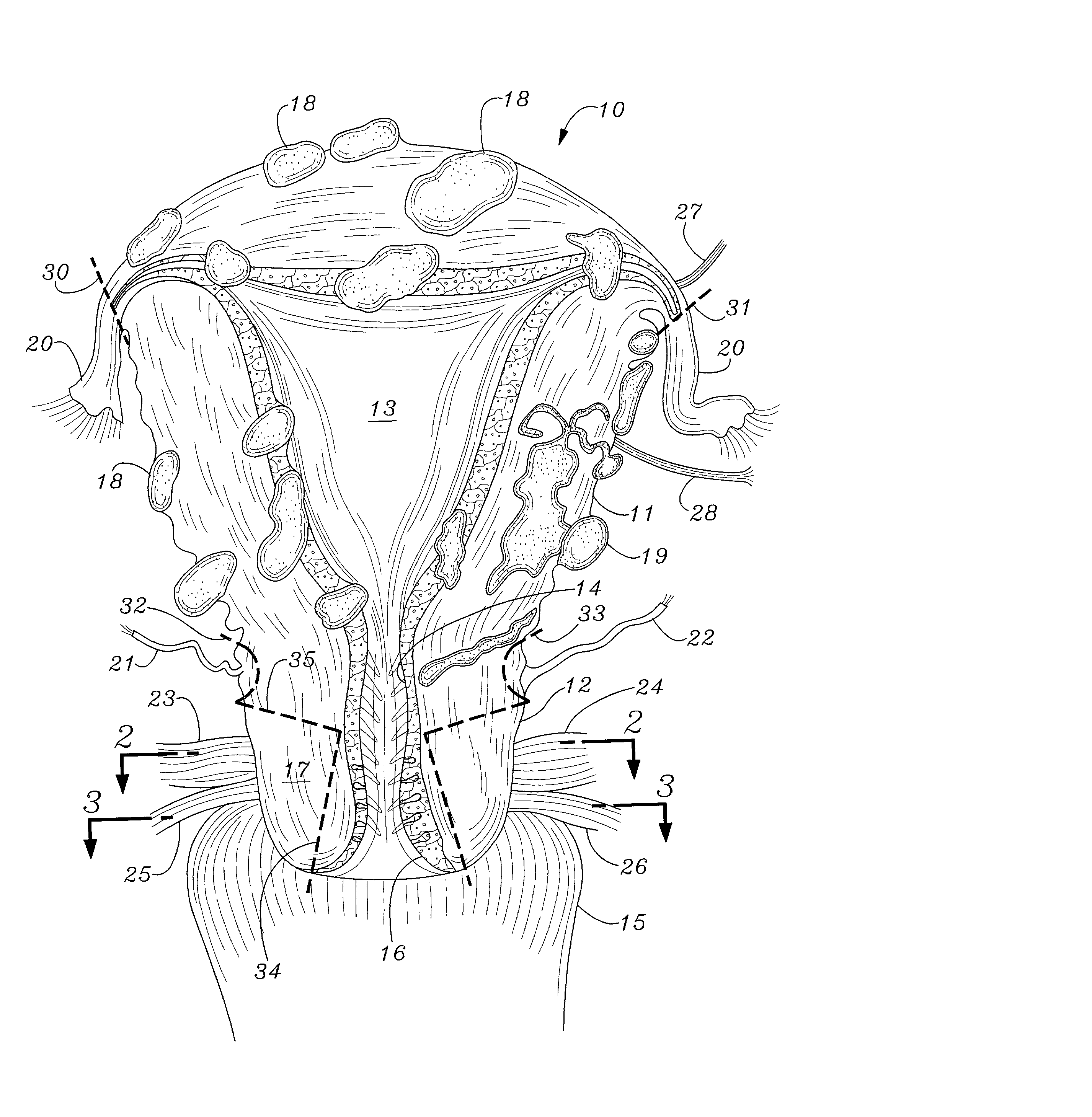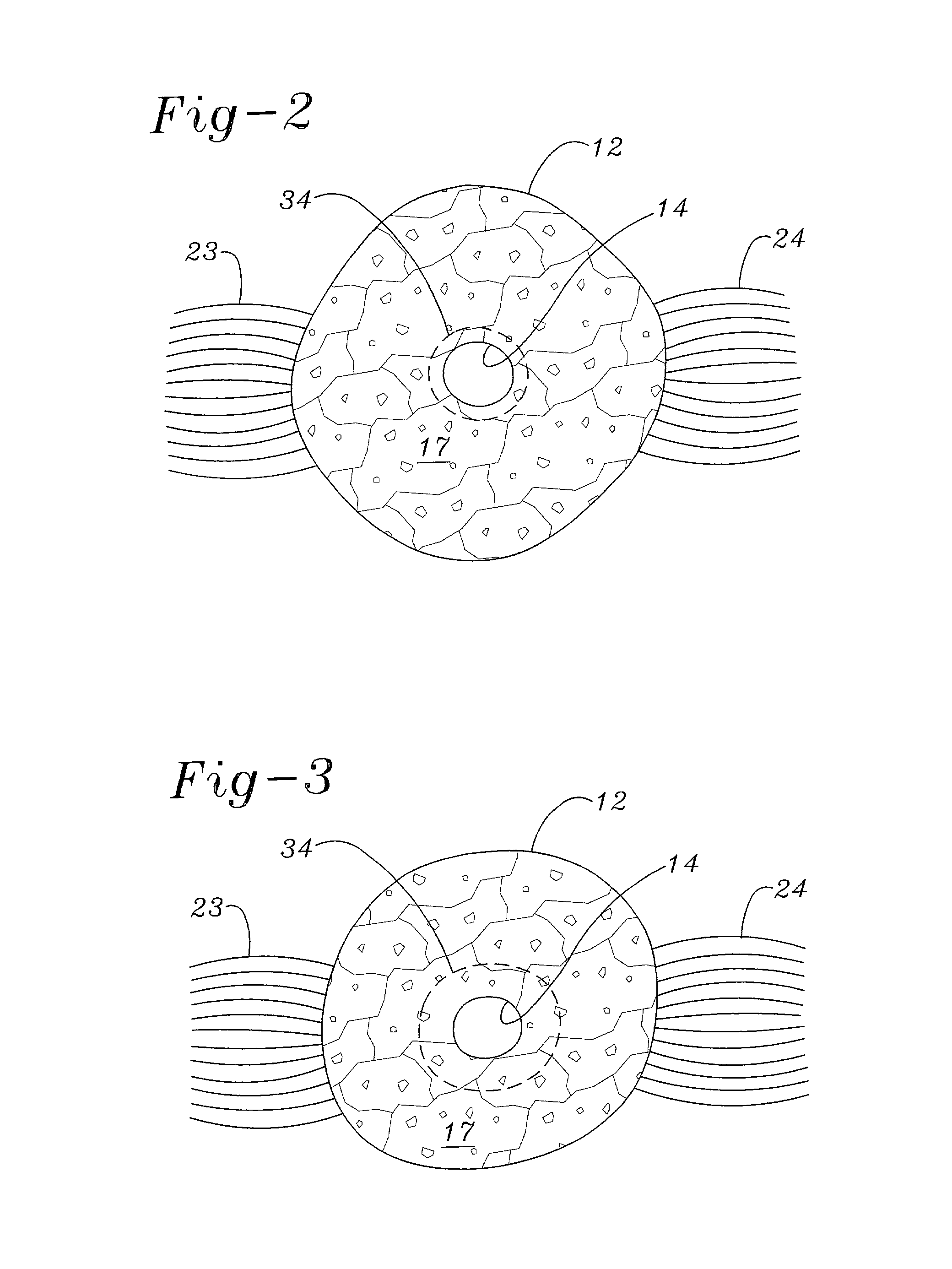Method for performing a hysterectomy
a hysterectomy and surgical method technology, applied in the field of hysterectomy, can solve the problems of major impairment of the pelvic support system, significant damage to the nerves in the frankenhauser nerve plexus, the vesical nerve plexus and various regional nerves, and the new technique is a relatively bloodless techniqu
- Summary
- Abstract
- Description
- Claims
- Application Information
AI Technical Summary
Problems solved by technology
Method used
Image
Examples
Embodiment Construction
[0015] Referring to FIG. 1 of the drawings, there is shown a longitudinal cross-sectional view of a human female uterus 10. The upper portion 11 of uterus 10 is called the corpus and the lower portion 12 is called the cervix. A typical uterus in a non-pregnant adult female human being is approximately three inches in length and has a width of approximately two inches at its widest. The diameter of the cervix 12 is a little less than one inch along section line 2-2. The larger cavity 13 in the upper region of uterus 10 is called the endometrial cavity. A tubular passageway 14, called the endocervical canal, runs from the lower end of endometrial cavity 13 to the top end or apex of a vagina 15. Cervix 12 extends a short distance into the vagina 15, the upper end of vagina 15 being attached to and closed by the lower portion of cervix 12. An outwardly flaring portion 16 at the lower end of the endocervical canal 14 is called the transformation zone or T-zone. The fibrous tissue 17 form...
PUM
 Login to View More
Login to View More Abstract
Description
Claims
Application Information
 Login to View More
Login to View More - R&D
- Intellectual Property
- Life Sciences
- Materials
- Tech Scout
- Unparalleled Data Quality
- Higher Quality Content
- 60% Fewer Hallucinations
Browse by: Latest US Patents, China's latest patents, Technical Efficacy Thesaurus, Application Domain, Technology Topic, Popular Technical Reports.
© 2025 PatSnap. All rights reserved.Legal|Privacy policy|Modern Slavery Act Transparency Statement|Sitemap|About US| Contact US: help@patsnap.com



